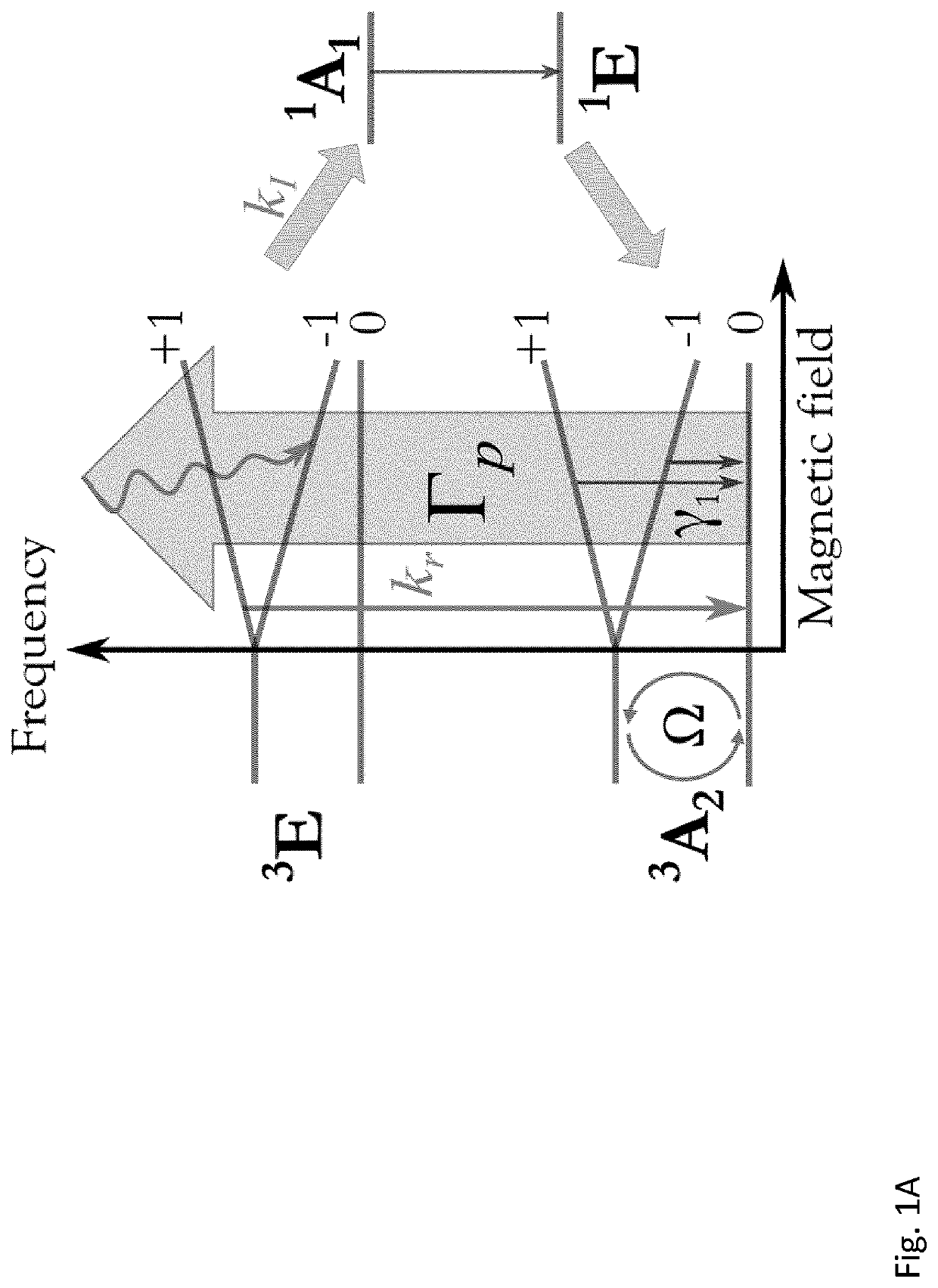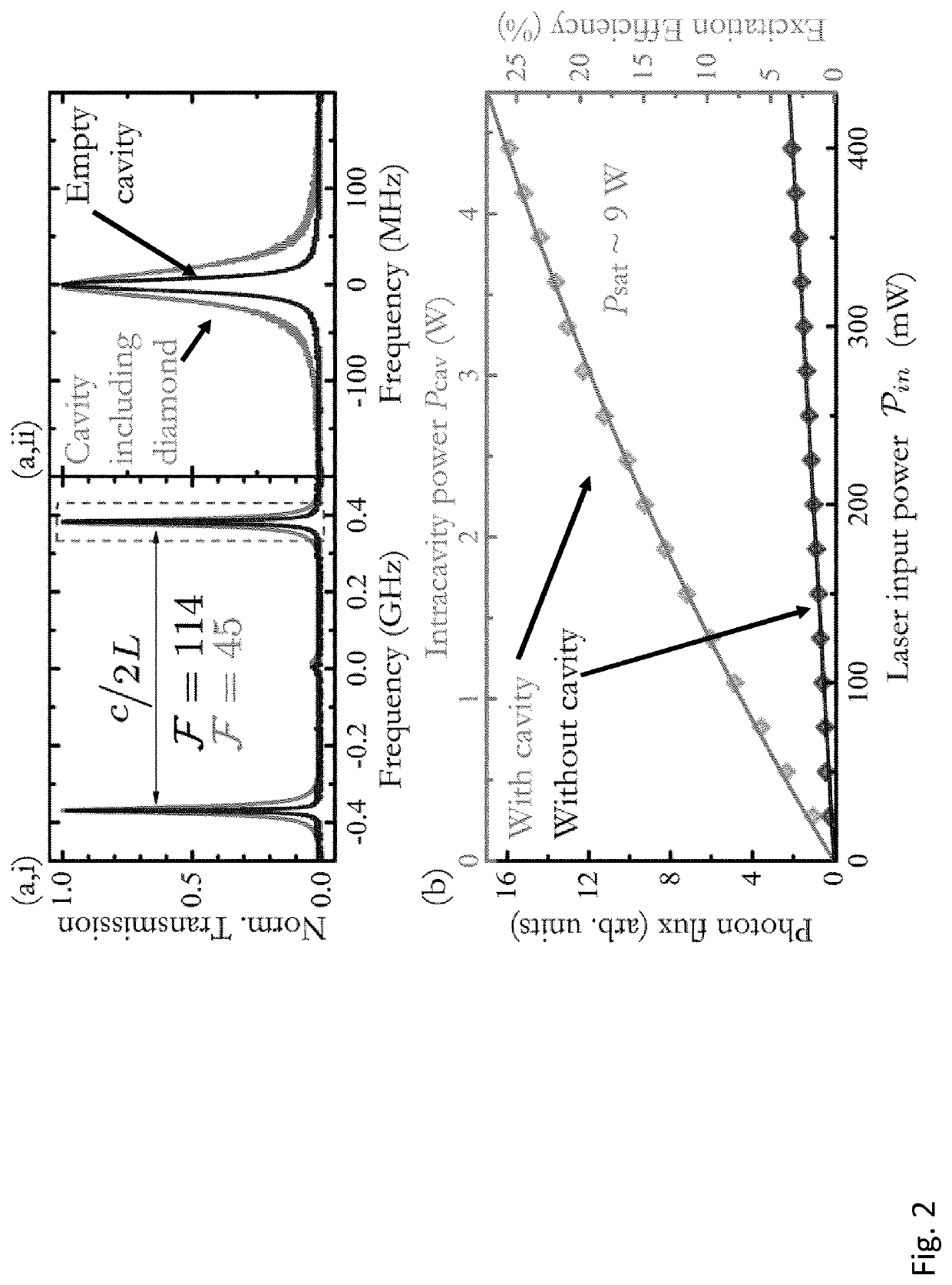A magnetometer using optically active defects in a solid state material
a solid-state material, optically active technology, applied in the direction of magnetic field measurement using magneto-optic devices, optical pumping analysis, electron paramagnetic resonance analysis, etc., can solve the problems of only achieving high-sensitivity magnetometers, limited application to particular processes, etc., to achieve the same level of sensitivity, high efficiency, and enhanced efficiency of fluorescence light generation
- Summary
- Abstract
- Description
- Claims
- Application Information
AI Technical Summary
Benefits of technology
Problems solved by technology
Method used
Image
Examples
Embodiment Construction
[0064]FIG. 1A is an energy diagram of the NV defects in diamond, where the electronic configuration of the NV center (schematic shown in FIG. 1(a)) exhibits spin-dependent fluorescence by virtue of the difference between the ms=±1 and the ms=0 spin levels inter-system crossing rates (kI) from the 3E excited triplet state to the shelving singlet states (1A1-1E). In a simplifed continuous wave (cw) picture for an ensemble of identical systems, the radiative relaxation rate (kr) of all the excited state levels competes with kI to bring about a fluorescence contrast (C) based on the initial distribution of the spinstate population in the triplet ground states (3A2). This ground state spin population is set by the ratio between the optical read-out pump rate Γp from above-band excitation (in this case a 532 nm laser), and the resonant microwave (MW) drive rate of the spin levels (Rabi frequency Ω), of which the optical above-band excitation mechanisms is near-perfect spin conserving. The...
PUM
| Property | Measurement | Unit |
|---|---|---|
| external magnetic field | aaaaa | aaaaa |
| optically detected magnetic resonance | aaaaa | aaaaa |
| magnetic field | aaaaa | aaaaa |
Abstract
Description
Claims
Application Information
 Login to View More
Login to View More - R&D
- Intellectual Property
- Life Sciences
- Materials
- Tech Scout
- Unparalleled Data Quality
- Higher Quality Content
- 60% Fewer Hallucinations
Browse by: Latest US Patents, China's latest patents, Technical Efficacy Thesaurus, Application Domain, Technology Topic, Popular Technical Reports.
© 2025 PatSnap. All rights reserved.Legal|Privacy policy|Modern Slavery Act Transparency Statement|Sitemap|About US| Contact US: help@patsnap.com



